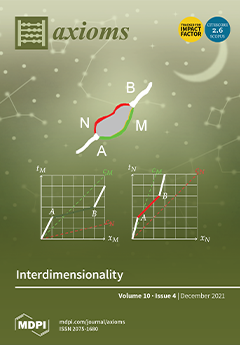As a weaker form of
-paracompactness, the notion of
-
-paracompactness is introduced. Furthermore, as a weaker form of
-
-paracompactness, the notion of feebly
-paracompactness is introduced. It is proven hereinthat locally countable topological spaces are
[...] Read more.
As a weaker form of
-paracompactness, the notion of
-
-paracompactness is introduced. Furthermore, as a weaker form of
-
-paracompactness, the notion of feebly
-paracompactness is introduced. It is proven hereinthat locally countable topological spaces are feebly
-paracompact. Furthermore, it is proven hereinthat countably
-paracompact
-
-paracompact topological spaces are
-paracompact. Furthermore, it is proven hereinthat
-
-paracompactness is inverse invariant under perfect mappings with countable fibers, and as a result, is proven hereinthat
-paracompactness is inverse invariant under perfect mappings with countable fibers. Furthermore, if
is a locally finite closed covering of a topological space
with each
being
-paracompact and normal, then
is
-paracompact and normal, and as a corollary, a sum theorem for
-paracompact normal topological spaces follows. Moreover, three open questions are raised.
Full article




